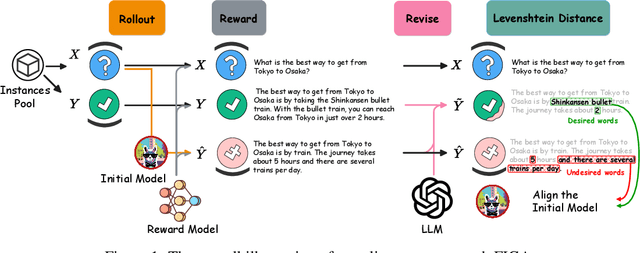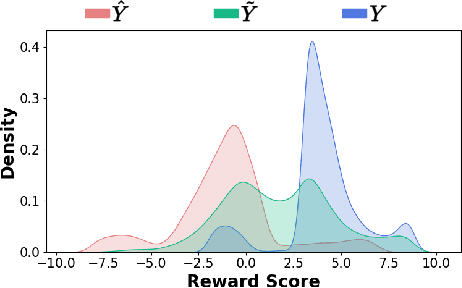Ranchi Zhao
DecorateLM: Data Engineering through Corpus Rating, Tagging, and Editing with Language Models
Oct 08, 2024Abstract:The performance of Large Language Models (LLMs) is substantially influenced by the pretraining corpus, which consists of vast quantities of unsupervised data processed by the models. Despite its critical role in model performance, ensuring the quality of this data is challenging due to its sheer volume and the absence of sample-level quality annotations and enhancements. In this paper, we introduce DecorateLM, a data engineering method designed to refine the pretraining corpus through data rating, tagging and editing. Specifically, DecorateLM rates texts against quality criteria, tags texts with hierarchical labels, and edits texts into a more formalized format. Due to the massive size of the pretraining corpus, adopting an LLM for decorating the entire corpus is less efficient. Therefore, to balance performance with efficiency, we curate a meticulously annotated training corpus for DecorateLM using a large language model and distill data engineering expertise into a compact 1.2 billion parameter small language model (SLM). We then apply DecorateLM to enhance 100 billion tokens of the training corpus, selecting 45 billion tokens that exemplify high quality and diversity for the further training of another 1.2 billion parameter LLM. Our results demonstrate that employing such high-quality data can significantly boost model performance, showcasing a powerful approach to enhance the quality of the pretraining corpus.
Beyond Imitation: Leveraging Fine-grained Quality Signals for Alignment
Nov 07, 2023



Abstract:Alignment with human preference is a desired property of large language models (LLMs). Currently, the main alignment approach is based on reinforcement learning from human feedback (RLHF). Despite the effectiveness of RLHF, it is intricate to implement and train, thus recent studies explore how to develop alternative alignment approaches based on supervised fine-tuning (SFT). A major limitation of SFT is that it essentially does imitation learning, which cannot fully understand what are the expected behaviors. To address this issue, we propose an improved alignment approach named FIGA. Different from prior methods, we incorporate fine-grained (i.e., token or phrase level) quality signals that are derived by contrasting good and bad responses. Our approach has made two major contributions. Firstly, we curate a refined alignment dataset that pairs initial responses and the corresponding revised ones. Secondly, we devise a new loss function can leverage fine-grained quality signals to instruct the learning of LLMs for alignment. Extensive experiments have demonstrated the effectiveness of our approaches by comparing a number of competitive baselines.
 Add to Chrome
Add to Chrome Add to Firefox
Add to Firefox Add to Edge
Add to Edge